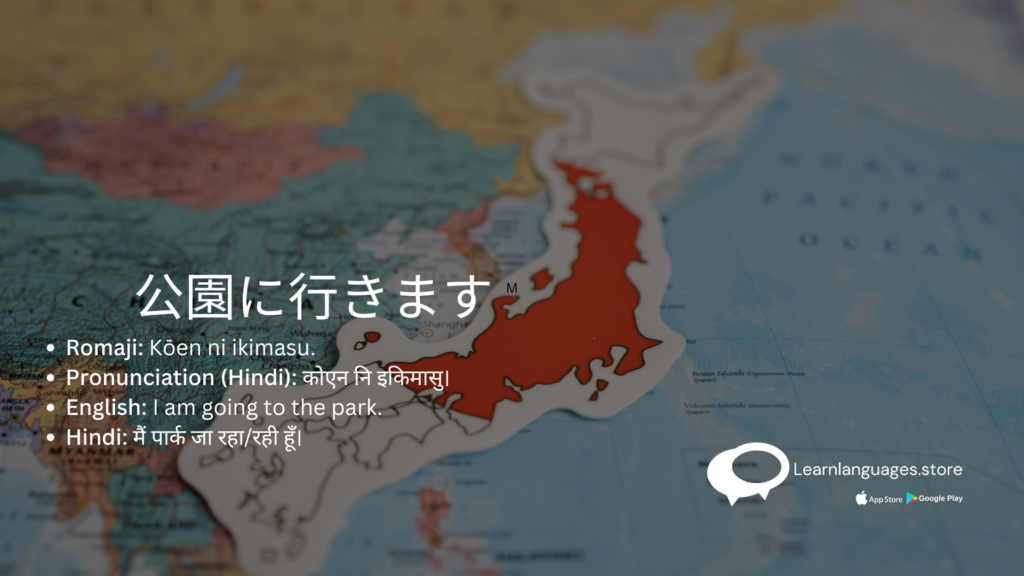Exploring the Versatile Japanese Particle に (ni): Time/Location/Direction Marker
Exploring the Versatile Japanese Particle に (ni): Time/Location/Direction Marker
Estimated reading time: 4 minutes

Introduction
Welcome to our comprehensive guide on the Japanese particle に (ni)! In Japanese grammar, に (ni) serves as a multifunctional marker for indicating time, location, and direction. Whether you’re just starting out or looking to deepen your understanding, this blog post will provide extensive explanations, humorous examples, and insights into exception usage, making your journey to mastering に (ni) both enjoyable and enlightening!
Understanding に (ni)
The particle に (ni) plays a crucial role in Japanese sentences by indicating various aspects such as time, location, and direction. Let’s delve deeper into its versatile usage.
Sentence Structure
The sentence structure with に (ni) varies depending on its usage:
- Time Marker: [Time] に [Verb/Action]
- Location Marker: [Location] に [Verb/Action]
- Direction Marker: [Destination] に [Verb/Action]
Examples
Let’s explore examples of each usage to understand に (ni) better.
- Time Marker:
- 明日に会いましょう。
- Romaji: Ashita ni aimashou.
- Pronunciation (Hindi): अशिता नि आईमासो।
- English: Let’s meet tomorrow.
- Hindi: कल मिलते हैं।
- 明日に会いましょう。
- Location Marker:
- 公園に行きます。
- Romaji: Kōen ni ikimasu.
- Pronunciation (Hindi): कोएन नि इकिमासु।
- English: I am going to the park.
- Hindi: मैं पार्क जा रहा/रही हूँ।
- 公園に行きます。
- Direction Marker:
- 学校に向かって走ります。
- Romaji: Gakkō ni mukatte hashirimasu.
- Pronunciation (Hindi): गक्को नि मुकत्ते हाशिरिमासु।
- English: I run towards the school.
- Hindi: मैं स्कूल की ओर दौड़ता/दौड़ती हूँ।
Identifying the Japanese particle に (ni)
in a sentence is essential for understanding its function. Here’s how you can identify it:
Look for the particle に (ni) directly after a time, location, or destination in the sentence. - Pay attention to the context of the sentence to determine whether に (ni) is indicating time, location, or direction.
- Understand that に (ni) helps specify when, where, or to where an action is taking place in the sentence.
- For example:学校に行きます。 (Gakkou ni ikimasu.)
- In this sentence, “学校” (gakkou) means “school,” and “に” (ni) comes directly after it, indicating the destination. “行きます” (ikimasu) means “go.” So, the particle “に” (ni) specifies that the action of going is directed towards the school.
- By recognizing the pattern of the time, location, or destination followed by に (ni) in a sentence, you can easily identify its role in indicating these aspects.
- 学校に向かって走ります。
Fun and Humorous Examples
Let’s add a touch of humor to our understanding of に (ni) with some funny scenarios!
- Time Marker:
- 明日には宿題が終わるはずです。
- Romaji: Ashita niwa shukudai ga owaru hazu desu.
- Pronunciation (Hindi): अशिता नि वा शुकुदाई गा ओवारु हज़ु देसु।
- English: My homework should be done by tomorrow.
- Hindi: मेरा होमवर्क कल तक हो जाना चाहिए।
- Location Marker:
- レストランに行くと、いつもお腹が空きます。
- Romaji: Resutoran ni iku to, itsumo onaka ga akimasu.
- Pronunciation (Hindi): रेसुटोरन नि इकु तो, इत्सुमो ओनाका गा आकिमासु।
- English: Whenever I go to a restaurant, I always get hungry.
- Hindi: जब भी मैं रेस्तरां में जाता/जाती हूँ, मुझे हमेशा भूख लगती है।
- レストランに行くと、いつもお腹が空きます。
- Direction Marker:
- 海に向かって歌うイルカがいます。
- Romaji: Umi ni mukatte utau iruka ga imasu.
- 海に向かって歌うイルカがいます。
- Pronunciation (Hindi): उमि नि मुकत्ते उताऊ इरुका गा इमासु।
Conclusion
we’ve explored the multifaceted nature of the Japanese particle に (ni), discovering its versatility as a marker for time, location, and direction. Through humorous examples and insightful explanations, we’ve gained a deeper understanding of how に (ni) functions in Japanese sentences.
-
Product on sale
 Japanese N4
Japanese N4₹18,300.00
₹24,300.00 -
Product on sale
 Japanese N5
Japanese N5₹16,300.00
₹18,300.00
Learn Languages Store
Vashi,
Email: services@learnlanguages.store










